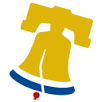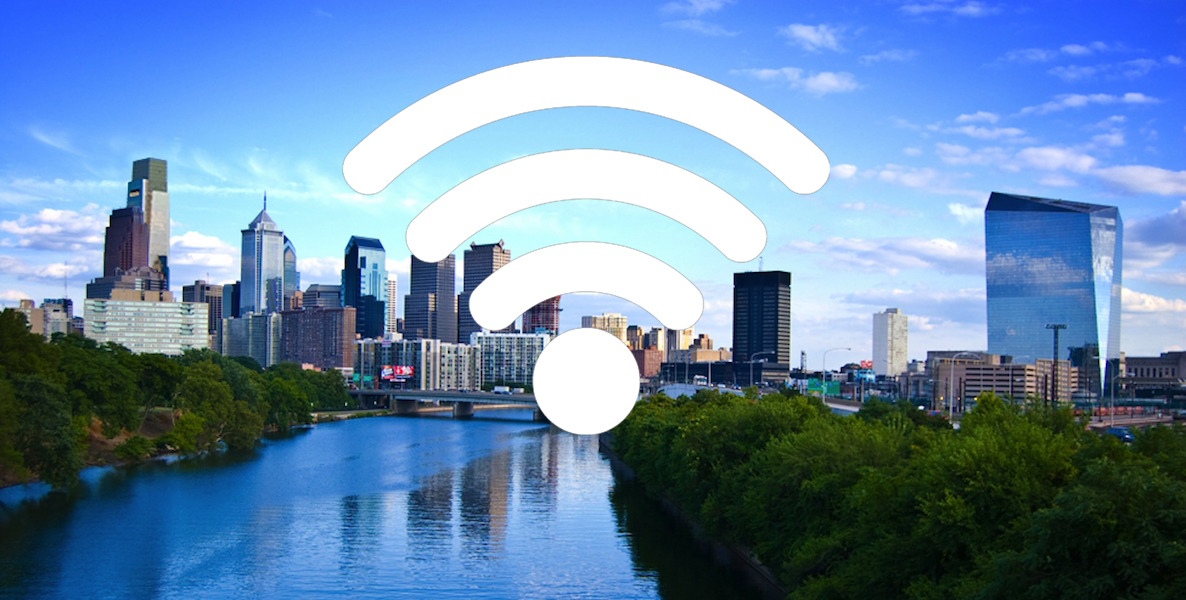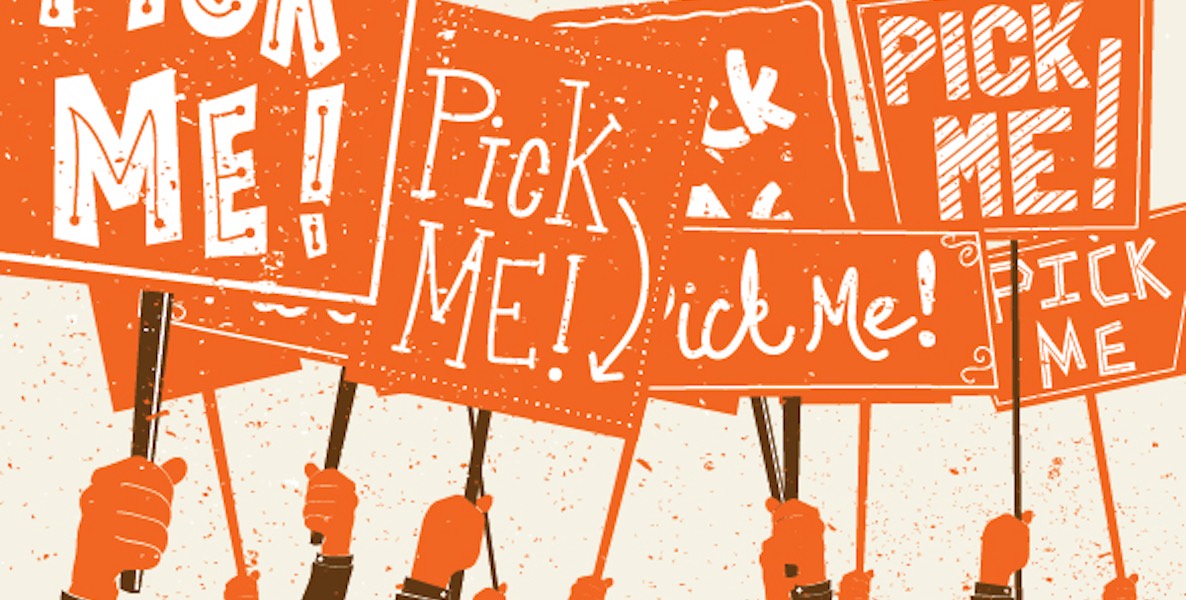In New York City over the last year, an antiquated piece of technology—the pay phone—has become the most modern of communication devices: A WiFi hotspot. Throughout the city, thousands of phones have been replaced by “Links” that allow free, uninterrupted high-speed Internet as users travel through a neighborhood. The Links also offer free domestic phone calls, access through a touchscreen to city services, maps, cell phone charging stations and quick access to 911 and 311. The services are not only free to users and the city—they are expected to generate over $500 million for New York City over the next 12 years, through advertising revenue from the Links and the WiFi service.
Welcome to the Internet of Things (IoT), the network of physical objects embedded with sensors and connectors that allow for greater automation, connectivity and communication among each other and human users. And welcome to what could be the future of Philadelphia.
Last week, the City of Philadelphia put out a call for ideas about how Philly could start using the IoT to dramatically change the way the city operates, in everything from Internet connectivity to street lighting, crime prevention, meter reading, parking, and public safety. The ideas, due August 12th, will form the basis for a subsequent Request For Proposal to enact certain projects over the next couple years. Rebecca Rhynhart, the city’s chief administrative officer, says they are open to any new ways to capitalize on the IoT—especially those that, like in New York, generate revenue for the city.
Already, Rhynhart says they have been approached by companies with proposals to use sensors to track different types of activity and data—like when asphalt ices over, so the Streets Department can automatically deploy a salt truck, or when a gunshot is fired, so the Police Department can send officers.
The city’s foray into the Internet of Things is, in one way, a long time coming. Back in 2005, then-Mayor John Street announced to much fanfare that Philadelphia was going to be the first big city in America to install a wireless internet infrastructure that would provide cheap web access to low-income residents—effectively getting every Philadelphian online. Wireless Philadelphia spectacularly collapsed, for a host of reasons, and the idea was scuttled soon after Michael Nutter took office in 2008. The only part of the original plan that has continued 11 years later is the expensive part: The city still pays $1.2 million a year to lease 25 cell phone towers around Philadelphia that are not used. (The RFI includes a map of the tower locations.)
Rhynhart says the idea of making Philly an IoT hub started with frustration over the wasted expense. “We have these 25 tower leases that we pay for every year, and we need to either use them or cancel the lease,” says Rhynhart. “It’s been a decade; now’s a good time to figure that out.”
The conversation quickly expanded beyond just WiFi as the city learned more about what those towers could be used for. Already, Rhynhart says they have been approached by companies with proposals to use sensors on towers and buildings to track different types of activity and data—like when asphalt ices over, so the Streets Department can automatically deploy a salt truck, or when a gunshot is fired, so the Police Department can send officers. “There are so many things out there that are revolutionary in terms of how the city could provide services,” says Rhynhart. “Cities like ours—on the front edge of how to modernize operations—are starting to look at that.”
First coined in 1999 by MIT tech pioneer Kevin Ashton, the Internet of Things is a long-held promise of our technological world, a world that until recently left many people behind. It is not about fostering social media, or bringing new cat videos into the world, or capturing a Pikachu (though, to be clear, better and faster WiFi access could enable all of that). It’s about using the advances of the digital realm to create a more advanced urban environment—one where citizens can access services more easily, the city can operate more efficiently, and the conveniences of technology are available and open to all.
Philadelphia is poised to be at the forefront of this movement toward smart cities with its proposed IoT network, which worldwide is expected to reach between 20 and 30 billion devices by 2020, according to differing research. In the United States, besides New York, Kansas City is starting to use the IoT on a new two-mile streetcar line dotted with kiosks providing transit info, free WiFi, traffic sensors and smart lights that conserve energy by dimming when no one is on the street. Chicago is installing sensors around its downtown to collect an array of data—about the environment, traffic, infrastructure—that will be uploaded on the city’s data portal, allowing for both planning at the government level and for citizen-devised innovations.
But it’s the city of Barcelona, in Spain, that really illustrates the possibilities of the IoT. Since 2011—when a new mayor was elected on a platform of technological innovation—the city has launched around 85 projects in 12 different areas of civic life to save money, be more efficient and make life easier for its citizens (and visitors). For example: Bus stops throughout the city are now interactive, providing riders with updates about locations of buses, USB charging stations, free WiFi and information about how to download Barcelona-specific apps. Drivers can install an app that identifies empty parking spots using sensors embedded in the pavement that indicate whether a car is parked in a location, and to pay for parking online. Within a year, according to a Harvard report, the city had reduced traffic congestion and emissions, and started issuing 4,000 parking permits per day.
Barcelona also uses the IoT to measure rainfall and humidity, to better monitor how much water is needed to irrigate parks, which officials say has saved $555,000 per year and decreased water usage by 25 percent. And, it has installed more than 1,100 smart lamp posts, with WiFi hot spots, LED-bulbs that dim when streets are empty, and sensors that measure air quality. The lamps have reduced energy consumption by 30 percent. In all, Barcelona officials estimate $58 million in water savings; $50 million in increased annual parking revenues; $37 million in savings from smart lighting; and 47,000 new jobs, including from local companies that have implemented some of the IoT improvements.
In all, Barcelona officials estimate $58 million in water savings; $50 million in increased annual parking revenues; $37 million in savings from smart lighting; and 47,000 new jobs, including from local companies that have implemented some of the IoT improvements.
Barcelona is in some ways an easier place to rapidly unroll the IoT. Its 1.6 million residents live in only 39 square miles—compared to Philadelphia’s 1.5 million citizens on 142 miles. It also had 500 kilometers of fiber optic cable installed nearly 30 years ago, which has allowed the Spanish city to be among the best in providing free WiFi to its residents: It has around 670 WiFi hotspots, 100 meters apart.
For Philadelphia, the process of connecting everyone and everything will likely be slower. In fact, Rhynhart says the city has learned from its past mistakes—and from the advice of people in the tech world—that a slow rollout of any new technology venture is probably best. (By some accounts, the scale of the ambition of Wireless Philadelphia contributed to its downfall.) Instead, Rhynhart says the city is likely to pilot several different projects throughout the city, to see how they work and how they can be improved.
The IoT Request for Ideas is the third of five projects funded by the Knight Foundation to help the city, in conjunction with urban solutions company CityMart, change the way it solves problems. Rather than deciding up front what it needs—widespread WiFi using the existing 25 towers, for example—the city is issuing an open call for ideas about how to make the IoT work for Philadelphians. “We want to make sure we understand well enough the capability and what we should be going for and going after before doing this,” says Rhynhart.
As CityMart notes on its Philadelphia Smart City web page, the call is wide open, even to “general city enthusiasts working locally or internationally.” Rhynhart says the city will consider all ideas in the weeks after the August 12th deadline—even those from individuals, who might not know how to make them work. (“In general, we’re looking for companies to send in ideas they have the ability to implement,” she says. “But I hate to say people shouldn’t send in a great idea.”) Once all the relevant departments have reviewed the applications, they will decide which projects to pursue further, and a budget, if needed. A subsequent Request for Proposals for those projects should could come out in September.








